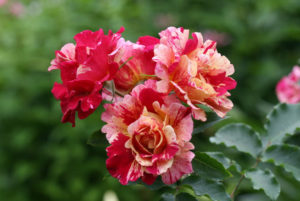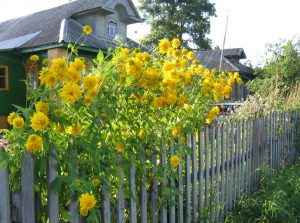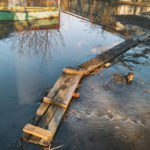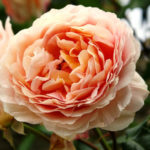My childhood memories prompted me to write this article. The memory still keeps a spring outing with his parents in suburban copses, where every spring dissolve delicate anemone.
The Latin name Anemone is translated as “daughter of the winds”. And even for early flowering this plant is often called snowdrop (I myself knew it as a child under this name).
A bit of botany
Anemone nemorosa is a perennial herb of the Ranunculaceae family. Thanks to the creeping branchy surface rhizome grows rapidly, and on the forest edges, in the Bush undergrowth after the snow melts, you can see the whole glade of its white flowers. In the wild, Anemone nemorosa is found in the mixed forests of Western Europe, as well as in the Mediterranean.

Anemone nemorosa — ephemeroid: after seed maturation, the aboveground part dies; this usually occurs in late June — early July. The plant gives abundant self-sowing, and ants often spread seeds — so anemone can spread over long distances. But its germination is low (in natural conditions — no more than 25%), and seedlings need a lot of time to gain strength and bloom (10 years or more), so the main way of reproduction of the plant is still vegetative. Although it is known that in the culture grown from the seeds of Anemone nemorosa are able to bloom in 2-3 years after planting.
Anemone reaches a height of 10-20 cm; leaves are pinnate, on long stalks; flowers are white, single, 2-4 (up to 6) cm in diameter. In cloudy weather, the flowers close and droop, and when it gets warmer and the sun comes out — rise and open petals.

Like other Ranunculaceae, Anemone nemorosa is considered a poisonous plant; it contains protoanemonin — a substance that has a strong irritant effect on the skin and mucous membranes. Although the toxicity of anemone is low, people with sensitive skin, as well as those who are prone to allergic reactions, should be careful when planting: it is believed that the highest concentration of protoanemonin — in the rhizomes of the plant.
Varieties of Anemone nemorosa
In natural habitats Anemone nemorosa in some places was endangered, so do not dig in the forest rhizomes of this plant to plant it in the country.
You can try to propagate the anemone seeds, collecting them in June with wild flowers. If you choose this path, sow the freshly harvested seeds because they lose their germination very quickly. But perhaps a simpler way is to buy and plant a varietal plant on the site, especially since breeders have brought many amazing varieties of anemone — with simple and double flowers of white, blue, pink color.

- ‘Robinsoniana’ — one of the popular old varieties, characterized by large simple bright purple flowers;
- ‘Rosea’ is a very floriferous variety, the flowers are simple, small, bright pink;
- ‘Kentish Pink’ — anemone with large simple flowers of pale pink;
- ‘Alba Plena’ — variety with small white double flowers;
- ‘Vestal’ — another Terry variety, white flowers, quite large;

- ‘Blue Beauty’– the plants of this variety of foliage with a bronze sheen, flowers are simple, large, blue;
- ‘Blue Eyes’ — Terry variety, large flowers, white, with a blue “eye”;
- ‘Royal Blue’ — another variety with bright blue-blue simple flowers;

There were a lot of absolutely amazing varieties that only vaguely resemble the usual wild anemone nemorosa. If you are a fan of garden curiosities and rarities, you may be interested in varieties with exotic green “flowers” – ‘Virescens’, ‘Viridiformis’, ‘Monstrosa’.

In short, there are options for every taste. Modest “savage” efforts breeders transformed, now she has a lot of images, among which every gardener can find a suitable — and not even one. However, choosing varietal plants, it is important to clarify their requirements for the conditions of cultivation and care — they can be significantly different from those that are necessary for the original form.
Planting and growing conditions
Plant and transplant anemones in the autumn. If the place for planting is chosen correctly, then in the future the plant will not require you to take special care and complex or time-consuming care.
Place Anemone nemorosa where there is enough sun in the spring and the summer is dominated by partial shade; ideal — landing on the edge of shrub thickets or orchard, it is close to the natural conditions of its habitat. The soil needs loose, moist, fertile, without stagnation of water. Wild-growing anemones put up with high acidity of the soil, but varietal may be more demanding — keep this in mind when planting.

If the spring is warm and dry, plants need watering — drought anemone tolerates bad. Mulch the soil to keep it loose and keep moisture.
Young leaves are often damaged by slugs — perhaps this is the only problem that you will have to solve when growing anemone: other pests bypass it, it is also not susceptible to diseases.
In frosty winters with little snow often freeze flower buds, and the plant does not bloom. To avoid this, take care of snow retention.
Garden accommodation
Anemones are ideal plants for gardens in a natural, natural style. Plant them under shrubs or deciduous trees, providing enough space for growth. If you place the anemone on the lawn among the lawn grass, note that mowing will have to be postponed until the death of the leaves — otherwise you can weaken the rhizome, which will lead to the death of the plant.

As partners of anemone, choose spring-flowering species. It is possible to Supplement the composition of ferns.
Do you have anemones in your garden? Or maybe you were lucky enough to see them every spring in the garden next to the dacha? Tell us about your impressions, share photos!






